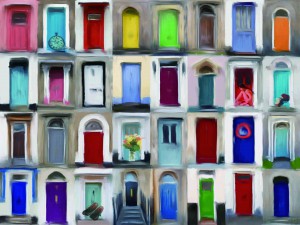earth
For immediate release
earth
March 1 – March 12, 2016
Closing reception Friday March 11, 6-8 PM
Gallery MC is pleased to present earth, a four-person sculpture exhibition of artists using porcelain, clay, stone, marble and metal. The artists include Phoenix Lindsay-Hall, Gorazd Poposki, Don Porcaro and Elise Siegel.
The umbrella of material and process seems at first the obvious tie that binds these artists together. But there is something more, something poetic in the ways in which each one’s relationship to their materials and methodologies defines the outcome. While they each have very different things to say, they share a reverence for an obsessive, hands-on process that all great craftsmanship requires. In the midst of a burgeoning and ongoing digital revolution, this desire to privilege the hand is a rare commodity and something wonderful to behold.
“Shepard,” Phoenix Lindsay-Hall’s large-scale porcelain sculpture is modeled after the wooden fence where Matthew Shepard was brutally attacked and left for dead in October 1998. Eighteen years after this iconic and cruel hate crime, Lindsey-Hall has recreated a symbol of struggle to remember those who have been lost in the fight for equality. That she chose to create a full-scale fence in porcelain is not lost on the subtleties of contradiction. The material’s inherent fragility is on one hand a metaphor for the plight of the disenfranchised, while on the other, it is the last thing one equates with wooden logs constructed to mark divisions. Its whiteness is both haunting and beautiful, and an enticement to draw one closer to its surface. But the fence’s form is crude and precarious, leaving us uneasy at the likeliness of its breaking.
The white marble reliefs of Gorazd Poposki set loose the animating essence of motion in nature. Through the application of hundreds of compressed small marks, contrasting textures, various states of polish and painterly shadowing, Poposki captures the flow of water and wind and imprints abstract landscapes in fossil-like form with his chisel in mostly rough, unpolished marble. Poposki maintains his own spontaneous creative process as another way of investing the works with a natural authenticity by sketching directly on the marble in what he refers to as “action drawing or painting.” As monolithic slabs, they appear almost as found objects, resembling a giant fossil. As hand made monuments to nature, Poposki records in stony permanence the immensity of our ties to the Earth and invites us to enter into a new contemplation of its beauty and significance.
Don Porcaro’s “Talismans” are at once both regal and whimsical. In a departure from the traditional assumptions about stone sculpture, which is that it is reductive in nature, Porcaro builds volume rather than carves it away. His stacking and layering of different stones resemble core samples dug up from the depths, revealing to us the passing of geological time and cultural histories. But they are also totemic. They have feet, which place them firmly in the realm of figuration and give them animation. Their brass “heads” and “necks” extend the associations to embrace everything from Middle Eastern hookahs to Venetian perfume atomizers, and African jewelry. They are, as the term “talisman” refers to, like mysterious figures with magical properties that would bring good luck to those who touch them, and their sheer physical sensuousness invites us to do just that.
While Elise Siegel’s highly expressive ceramic portrait busts fall within the Renaissance tradition, they also borrow and reinterpret some of the exaggerated forms of the Jomon dogu figures of Neolithic Japan, the hollow eyes of terracotta Haniwah funerary figures, and the complex language of African masks. Siegel acknowledges that portraits can be creative expressions, in what we in the Western tradition call art. But she is more interested in works that have had some other cultural function, either in ritual or in daily life, such as idols, reliquaries, masks and toys. Keeping that in mind, while each of her busts is a distinct individual, they are not portraits of specific people. Rather, they are meant to embody a psychic state familiar to the viewer, allowing for a wide range of projections, and for reflecting that which the viewer brings to the encounter.
____
On view in Gallery 2: a large work on paper by Pietro Finelli entitled
Op.1 Drawing for a piano et vice versa.
Gallery MC
Hours: Wed – Friday 12 to 6pm; Saturday 1 to 6pm; Monday and Tuesday by Appointment.
549 West 52nd Street, 8th Floor (Between 10th and 11th Avenue)
Phone: 212.581.1966
Email: info@gallerymc.org


